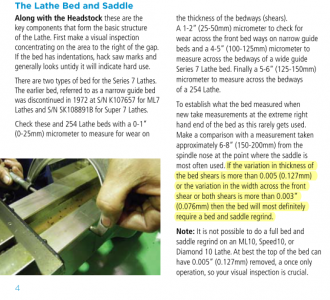- Joined
- Dec 8, 2015
- Messages
- 32
Hello folks,
I've found a lot of good information on this forum so I though't I'd pick the brains of the experienced machinists here about restoring the bed of my lathe. I have an Atlas 12 inch lathe, and like many who own one, it's seen better days. I've done a lot of work on the thing (and had a blast doing so) and I'm having trying to weigh my options with refinishing the bed. For those of you who aren't familiar with the Atlas lathes, they have flat ways instead of the inverted v ways and this seems like a simple enough thing to fix up. Would it be worth having a machine shop surface grind these? Or heck, maybe even fly cut the ways and I'll take a stab at scraping them after? Is scraping then flaking something very hard to do? I've never tried to scrape metal but I've been working with wooodworking hand tools for about a decade and a half now and I have a decent touch with this sort of thing. I realize I'd need access to a master surface of an appropriate size. Has anyone ever reconditioned an Atlas lathe bed that turned out really good? Thanks for the input!
Drew
I've found a lot of good information on this forum so I though't I'd pick the brains of the experienced machinists here about restoring the bed of my lathe. I have an Atlas 12 inch lathe, and like many who own one, it's seen better days. I've done a lot of work on the thing (and had a blast doing so) and I'm having trying to weigh my options with refinishing the bed. For those of you who aren't familiar with the Atlas lathes, they have flat ways instead of the inverted v ways and this seems like a simple enough thing to fix up. Would it be worth having a machine shop surface grind these? Or heck, maybe even fly cut the ways and I'll take a stab at scraping them after? Is scraping then flaking something very hard to do? I've never tried to scrape metal but I've been working with wooodworking hand tools for about a decade and a half now and I have a decent touch with this sort of thing. I realize I'd need access to a master surface of an appropriate size. Has anyone ever reconditioned an Atlas lathe bed that turned out really good? Thanks for the input!
Drew

